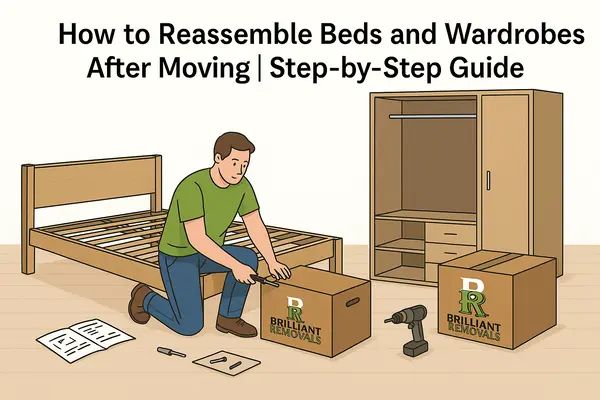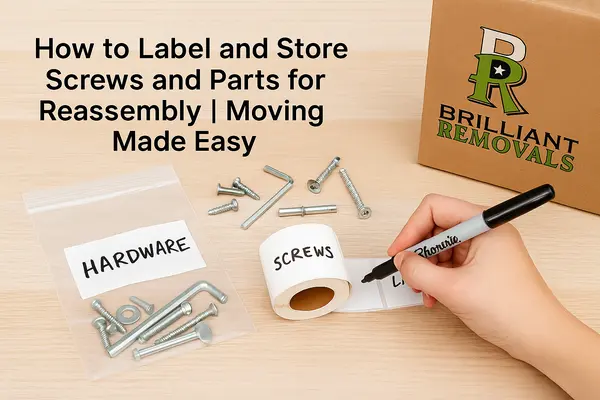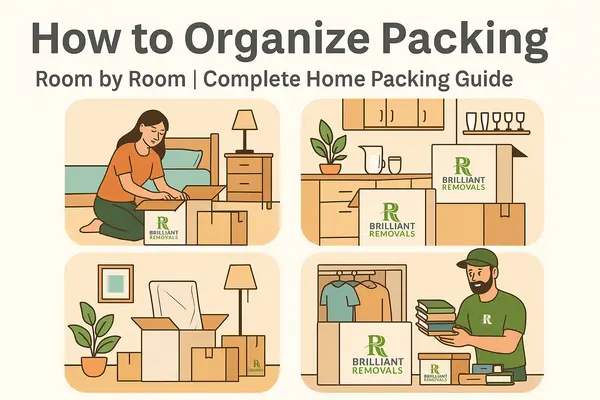
How to Load a Van Like a Pro: Space-Saving Tips for DIY Movers
If you’re planning a DIY move, knowing how to load a van efficiently can make the difference between a smooth, stress-free relocation and a chaotic one.
Proper van loading helps you maximize space, prevent damage, and even reduce the number of trips needed — saving time, effort, and fuel.
In this step-by-step guide, we’ll walk you through the best way to stack boxes, secure furniture, and optimize every inch of your moving van.
Step 1: Gather the Right Tools and Materials
Before you begin loading, prepare everything you’ll need to make the process safe and efficient.
| Essential Tools | Purpose |
| Moving blankets | Protect furniture from scratches |
| Ratchet straps / bungee cords | Secure heavy or tall items |
| Dolly / hand truck | Move large boxes and appliances safely |
| Packing tape & stretch wrap | Keep items sealed and stable |
| Furniture pads or cardboard sheets | Prevent sliding and floor damage |
Pro Tip: Keep small tools (screwdrivers, Allen keys, zip ties) in a labelled “Tool Kit” box so you can easily reassemble furniture later.
Check out the article on How to Label and Store Screws and Parts for Reassembly | Moving Made Easy
Step 2: Load Heavy Items First
Always begin with your heaviest and bulkiest items, such as:
- Fridges and washing machines
- Sofas and armchairs
- Wardrobes and dressers
- Mattresses and tables
Position them against the walls of the van, evenly balancing weight on both sides.
Heavier items should sit closest to the cab (front of the van) for better stability while driving.
| Do’s | Don’ts |
| Use blankets between furniture pieces | Stack heavy items on lighter ones |
| Keep weight evenly distributed | Leave gaps — items can shift in transit |
| Secure each heavy item with straps | Load all heavy pieces on one side |
Check out the Article on How to Pack Fragile Items Safely for Transport
Step 3: Stack Boxes Strategically
After large items are secured, start loading boxes — but be smart about the order.
Best Box Loading Strategy
- Place heavy boxes on the floor, closest to the front.
- Medium boxes in the middle, stacked neatly on top.
- Light boxes or fragile items at the very top.
This creates a stable, layered structure and prevents boxes from collapsing.
| Box Type | Placement |
| Heavy books / tools | Bottom layer |
| Clothes / kitchenware | Middle layer |
| Fragile décor / glassware | Top layer |
Pro Tip: Fill empty spaces between stacks with soft items like cushions or blankets — this prevents shifting during transport.
Step 4: Protect and Secure Furniture
Furniture is often the first thing to get scratched or damaged during a DIY move. To protect it:
- Wrap sharp edges and corners with bubble wrap or furniture pads.
- Disassemble large pieces (like bed frames and tables) to save space.
- Keep screws and bolts in labelled bags taped to the respective furniture pieces.
- Cover upholstery with plastic covers to protect from dirt and moisture.
Once everything is loaded, use ratchet straps to secure furniture to the van walls — preventing movement while driving.
Check out the Full Article on How to Protect Furniture Parts During Disassembly and Transport
Step 5: Use Every Bit of Space
Smart packing means using hidden spaces effectively:
- Store pillows, clothes, and towels inside drawers or suitcases.
- Slide flat items (mirrors, shelves, bed slats) along the sides of the van.
- Place light items on top of stacked furniture if they can’t fall or shift.
- Fill gaps between large objects with bags or rolled rugs to stop movement.
Pro Tip: Imagine the van as a 3D puzzle — the goal is to fill every section tightly but safely.
Step 6: Secure Everything Before Driving
Once everything is in place:
- Use straps or ropes to tie down furniture and large boxes.
- Check weight balance — your van shouldn’t lean to one side.
- Ensure nothing blocks your rear view or access to essential tools.
- Close doors carefully — nothing should press against them from inside.
Safety comes first — even a single loose item can shift during a sharp turn or brake.
Step 6: Secure Everything Before Driving
Once everything is in place:
- Use straps or ropes to tie down furniture and large boxes.
- Check weight balance — your van shouldn’t lean to one side.
- Ensure nothing blocks your rear view or access to essential tools.
- Close doors carefully — nothing should press against them from inside.
Safety comes first — even a single loose item can shift during a sharp turn or brake.
Bonus: Common Loading Mistakes to Avoid
| Mistake | Why It’s a Problem | What to Do Instead |
| Stacking boxes randomly | Leads to crushed or damaged items | Sort by size and weight |
| Not securing furniture | Can cause sliding and breakage | Use straps or cords |
| Leaving space gaps | Items shift and fall during transport | Fill gaps with soft padding |
| Loading light items first | Risk of heavier items crushing them | Load heavy to light |
| Ignoring balance | Vehicle may tilt or sway | Distribute weight evenly |
Final Thoughts
Loading a van efficiently is all about balance, organization, and protection.
By following these steps, you’ll:
- Save time and space,
- Avoid damages, and
- Ensure a smoother, safer journey for your belongings.
Whether you’re moving locally or across the UK, Brilliant Removals London can help you pack, load, and transport your items securely — with flexible Man and Van services and full moving packages to fit any move size.











